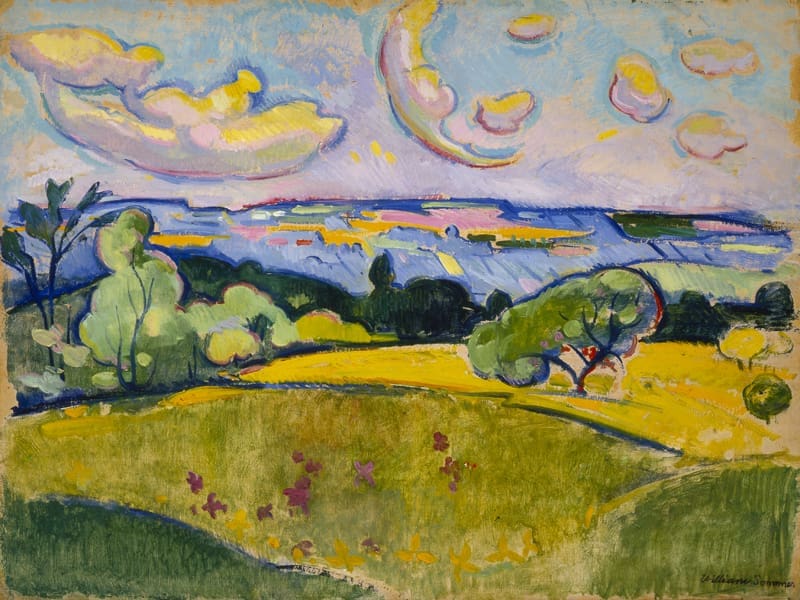A longtime favorite across Northeast Ohio, William Sommer absorbed ideas from Cubism and other modern European art movements, adapting them to his distinctly Midwestern subject matter of farm scenes, landscapes, and portraits.

Sommer painted this landscape shortly after he visited New York City for the groundbreaking Armory Show of modern art in 1913. It was there that he saw innovative works by artists like Paul Cézanne and Vincent van Gogh. He was especially enthralled by the work of French painter Henri Matisse, whose bold and unnatural use of color shocked critics so much that they called Matisse and his colleagues “fauves” (French for “wild beasts”). This untamed use of color can be seen in the pastel blues, pinks, yellows, and greens of Sommer’s cheerful Landscape with Yellow Clouds.
Have you ever seen a sky or landscape with the colors that Sommer used for his painting? Why do you think these colors were so shocking to audiences back in the early 1900s?
Sommer spent most of his life in Northeast Ohio and was known as a leader of the “Cleveland School,” a group of Cleveland-based artists who were active during the first half of the twentieth century. As part of this scene, Sommer co-founded the Kokoon Arts Club in 1911 as an independent group designed to promote modernist art in Northeast Ohio, and to offer more creative freedom to practicing artists. Sommer’s work can also be found in the many murals he painted for buildings throughout the area, including the Cleveland Public Library, Cleveland Public Auditorium, and the main office of the Akron Board of Education.

